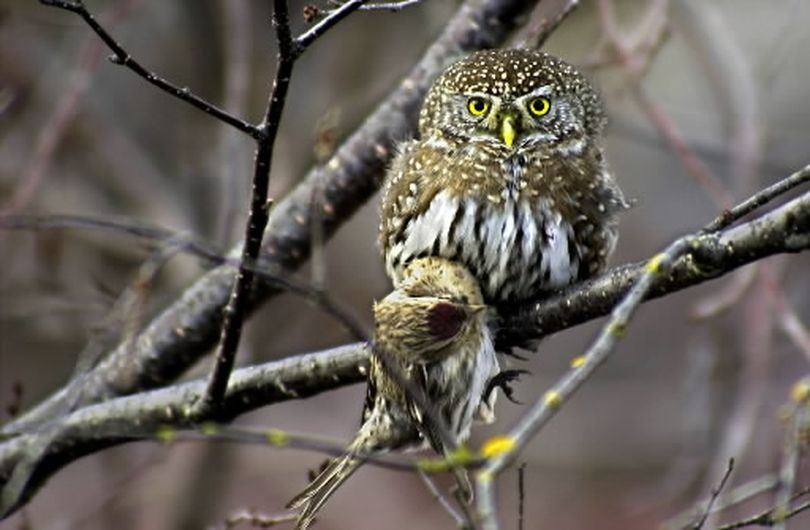Owls think winter nesting is a cool idea

WILDLIFE -- Several of the 11 owl species that inhabit most parts of Idaho are already well into their courtship, according to Jim Lukens of the Idaho Fish and Game Department.
They get the early start so the hatching of owlets will coincide with peak prey abundance in spring and gives owlets a long summer to become skillful, self-sufficient hunters, he said.
Your after-dark walks have been met with hoots of great horned owls, but maybe you didn't recognize that it was a female and male talking to each other. Among the wealth of informaton offered at owling.com this audio recording of a female and male calling back and forth. The sequence starts with the female, then the male and ends with the female.
Another good source of information on these fascinating nocturnal birds of prey is Owl Pages.
Meantime, read on for for more details about what local owls are doing in this season of love.
According to Lukens:
The courtship ritual of the great horned owl begins as early as December. Territorial hooting – called the “advertisement song” – is commonly heard at sundown. Often sung in duet by the male and female, this call announces a territory and may serve to strengthen the pair bond.
Though female great horned owls are up to a third larger than males, the female’s hoot is the higher pitched of the two. Pair duets are usually heard prior to egg laying, often in the immediate vicinity of a chosen nest. Great horned owls have a wide repertoire of calls, including squawks, chitters and barks, whose meanings are still poorly understood.
Another early nesting owl is the western screech owl, a small woodland owl with distinct eartufts. Pairs use two song types: the “bouncing ball” song – used for territorial advertisement, and the “double trill” song – used as a contact call between the male and female. Again, the female’s voice is higher pitched.
Occasionally making forays into the valleys is the northern saw-whet owl, a small, short-bodied owl with enormous eyes. It is named for its alarm call, which resembles the whetting of a saw with a file. The male advertising song is a series of monotonous toots usually sung from a prospective nest hole. The female sometimes sings a softer version.
The northern pygmy owl is a tiny woodland owl of the mountain west. It sings most frequently at sunrise and sunset. The male’s common advertising call – or “toot” song – is a repetitive single note sung late February through June.
One of our rarest owls, the boreal owl, is a year-round resident of subalpine forests. This small owl nests in old woodpecker cavities. Males start singing as early as late January, with females joining in by early February. The male’s “staccato” song serves as a long distance advertisement to potential mates and is usually given in the vicinity of potential nest cavities.